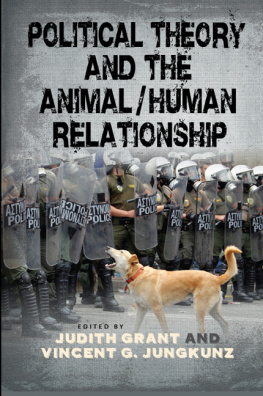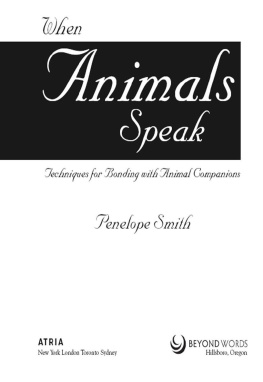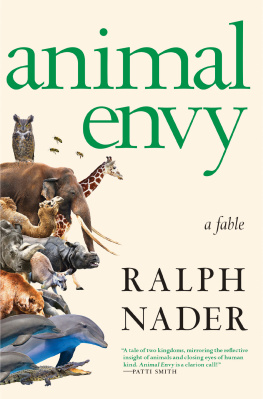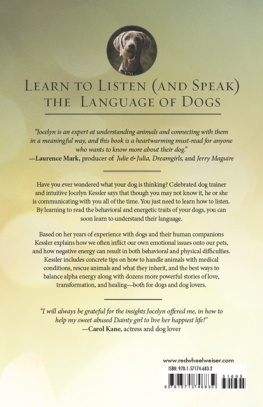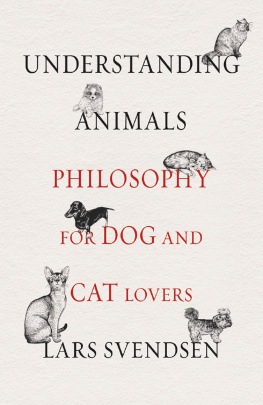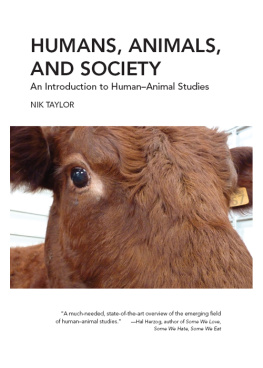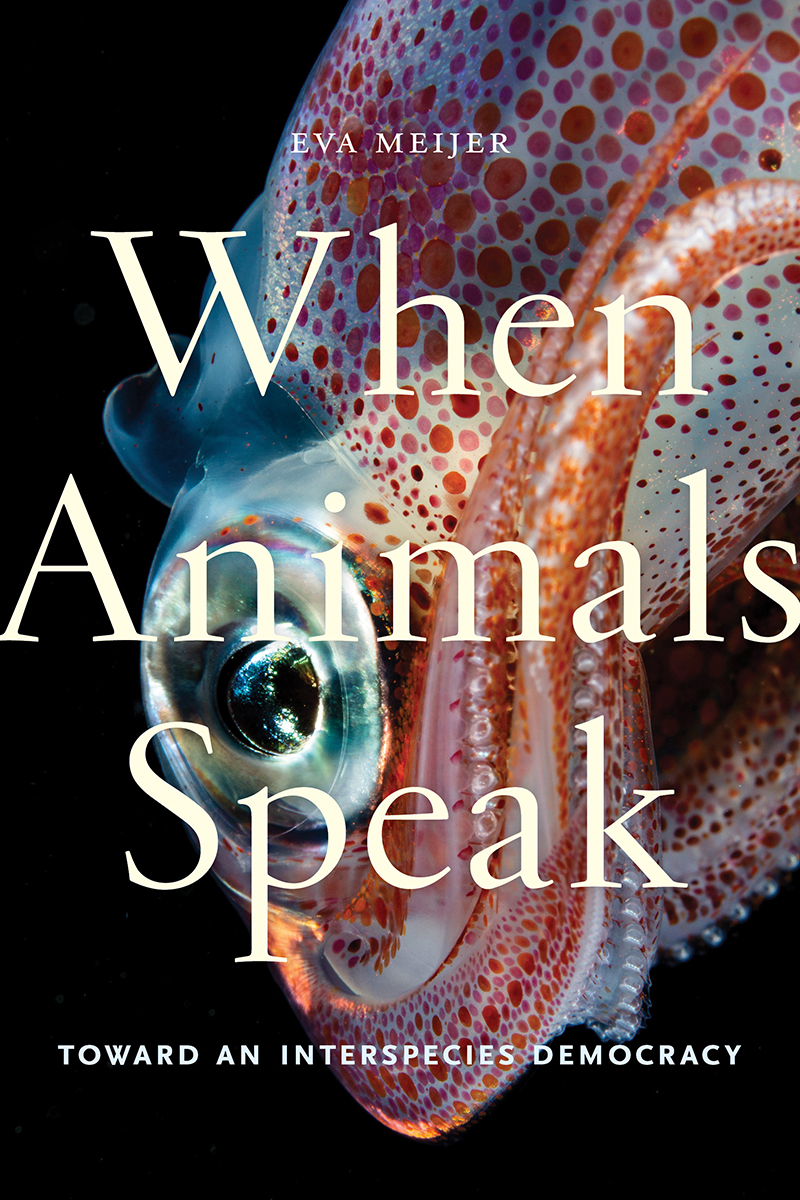
When Animals Speak
Animals in Context
General Editor: Colin Jerolmack
When Animals Speak: Toward an Interspecies Democracy
Eva Meijer
When Animals Speak
Toward an Interspecies Democracy
Eva Meijer

NEW YORK UNIVERSITY PRESS
New York
NEW YORK UNIVERSITY PRESS
New York
www.nyupress.org
2019 by New York University
All rights reserved
References to Internet websites (URLs) were accurate at the time of writing. Neither the author nor New York University Press is responsible for URLs that may have expired or changed since the manuscript was prepared.
Library of Congress Cataloging-in-Publication Data
Names: Meijer, Eva, 1980 author.
Title: When animals speak : toward an interspecies democracy / Eva Meijer.
Description: New York : New York University Press, [2019] | Includes bibliographical references and index.
Identifiers: LCCN 2019001462| ISBN 9781479859351 (cl : alk. paper) | ISBN 9781479863136 (pb : alk. paper)
Subjects: LCSH: Human-animal communication. | AnimalsSocial aspects.
Classification: LCC QL776 .M45 2019 | DDC 591.59dc23
LC record available at https://lccn.loc.gov/2019001462
New York University Press books are printed on acid-free paper, and their binding materials are chosen for strength and durability. We strive to use environmentally responsible suppliers and materials to the greatest extent possible in publishing our books.
Manufactured in the United States of America
10 9 8 7 6 5 4 3 2 1
Also available as an ebook
For Pika and Putih
Contents
Orangutan Ken Allen was born in the San Diego Zoo. While still in the nursery he was already trying to unscrew every nut he could get his hands on, and he used humans as objects to climb on in order to escape the room. In the years that followed, he perfected his techniques, which led him to escape his enclosure many times. This forced the zoo to alter the fences around the orangutan enclosure and change their windows and locks. They also tried to distract him by bringing in females, and they hired spies posing as visitors in an attempt to find out how he did it. But Ken Allen was not the only orangutan who had a desire to leave captivity. His mate Vicki once took over from him, unbolting a door after he was caught, and escaped. Kumang and Sara, two sisters from the same group, organized and coordinated their own escapes, for example, by using a mop handle that one of them held in place while the other climbed it. Cooperative orangutan resistance is found in many other zoos as well, including in the Woodland Park Zoo in Seattle, where a group of five orangutans slipped through several security doors and climbed over a high wall. Neither bananas nor water from fire hoses could convince them to go back in, and they had to be tranquilized. These examples are not the only ones availableorangutan resistance is a structural problem for zoos, often leading them to isolate individuals or break up family bonds by relocating orangutans (Hribal 2012).
There are many other examples of non-human animals who challenge their oppression (chapter 7): non-human animal workers refuse to work, captive wild animals use violence against their captors, farm animals escape on their way to slaughterhouses, laboratory animals turn their heads away. Other non-human animals seek out human company, either becoming members of human households or taking up residence in their gardens, cities, or fields. Non-human animals may also care for humans or work side by side with them; human and non-human animals can have meaningful encounters, develop friendships, or simply co-exist as neighbors.
Non-human animals are individuals with their own perspectives on life, who form relations with human and non-human others. In current human legal and political systems, and in many cultural practices, they are seen and used as objects. Animal rights theorists have challenged this since the 1970s, arguing that non-human animals are sentient beings, who are similar to humans in morally relevant aspects and who should therefore be seen as part of our moral communities. Drawing on these views, and on insights provided by social justice movements that focus on democratic inclusion, recent work in political philosophy proposes to view non-human animals as political groups, and some of these as members of shared interspecies communities. This movement from ethical consideration to political participation shifts questions about non-human animals from how they should be treated to how more insight can be gained into the ways they want to live their lives, what types of relationships they desire with one another and with humans, and how we can and should share the planet that we all live on (Donaldson and Kymlicka 2011).
Questions about non-human animal political participation, interspecies communication, and political voice have not received much attention in animal philosophy until now. language and world, politics and activism, shared and sovereign communities, democracy and difference, in order to develop a theory of political animal voices.
From the Political Animal to Political Animal Voices
In political philosophy, the ability to speak is usually considered a necessary condition for being a political actor and for membership in the political community. Speaking is seen as a human enterprise, one that is clearly distinct from the way that other animals express themselves and use their voices. Being able to speak is seen as necessary for rational deliberation (Habermas 1981), for participation in a (hypothetical) social contract (Rawls 1971), for democratic action (Rancire 2007), for collective intentional action (Pepper 2016), and for other forms of political participation. The view that only humans are political actors has a long history. In Book I of The Politics, Aristotle defines man as political animal and the only animal that is endowed with speech, or rather logos, which here refers to rational speech, and more specifically the ability to distinguish between right and wrong in a speech act (Aristotle [350BC] 1991, 1253a, 1018; Derrida 2011, 348). This capacity is necessary for being part of the political community. By attributing logos only to humans, he draws a line between humans and other animals. This line functions as a border around the political; only humans can be political animals. It also defines political speech: logos, meaning speech informed by reason, is contrasted with phon, the sound of the voice, which can express pain or pleasure. Non-human animals have voices and express themselves, but they cannot speak in the proper sense because they cannot use their voices to decide between just and unjust; they do not have logos. What is furthermore important to note is that this move is made inside human languageAristotle is using human words to argue that using human words is what draws the line between who can speak and who cannot, and between who can be a political actor and who cannot.
Recent work in political philosophy challenges the idea that only humans are part of democratic communities (Cochrane, Garner, and OSullivan 2016), as well as the idea that only humans can be political actors (Donaldson and Kymlicka 2011). Animal ethics has, at least since the work of Peter Singer (1975) and Tom Regan (1983), always been a political project, because it challenges the borders of the moral community and focuses on non-human animal rights. These new approaches draw more heavily on the vocabulary developed in political philosophy. They are united by a focus on justice, and on reformulating existing political institutions, practices, and structures to secure just human/non-human animal relations (Cochrane, Garner, and OSullivan 2016). Most political animal philosophers focus on including non-human animal interests in existing liberal democratic institutions (Cochrane 2012; Garner 2013; Rowlands 1997; OSullivan 2011).
Next page


